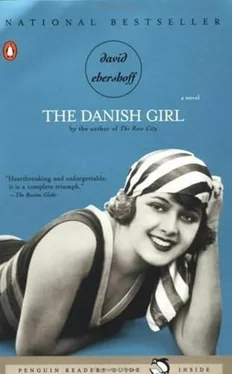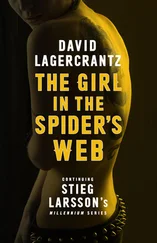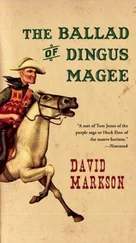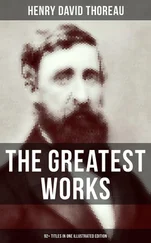Carlisle next suggested Dr. Buson, a junior member of a psychiatric clinic in Auteuil. “How did you hear of him?” Einar asked Carlisle, who in six weeks had settled into Paris faster than Einar had in three years. Already he was into his second box of calling cards, and held weekend invitations to Versailles and St-Malo. There was a tailor on the rue de la Paix who knew from memory Carlisle’s shirt size.
He was driving Einar to Dr. Buson’s clinic, and Einar could feel the heat of the engine through the metal floor.
“Hans gave me his name,” Carlisle said.
“Hans?”
“Yes. I called him up. Told him a friend of mine needed to see a doctor. I didn’t say who.”
“But what if he-”
“He won’t,” Carlisle said. And then, “So what if he does? He’s your oldest friend, isn’t he?” Now, with his blond hair blowing around his face, Carlisle could have been no one in the world but Greta’s twin; he pushed his hair over his ears.
“Hans asked about you,” Carlisle continued. “He said he knows something’s wrong. He said he saw you one day walking along the quai du Louvre, heading down to the Seine, and he almost didn’t recognize you.”
Carlisle’s hand was fiddling with the wiper gauge, and Einar kept expecting it to fall from the little knob to his knee again. “He told me you walked right by him,” Carlisle said. “Said he called your name but you just walked by.”
It sounded impossible. “By Hans?” Einar said, and in the reflection of the car’s window Einar could see the vaguest outline of himself, as if he were just barely there. He heard Carlisle suggest, “Maybe you should tell him. He’d understand.”
Dr. Buson, who was about Einar’s age, was of Genevois origin. He had black hair that stood up at the crown, and his face was thin in the cheeks, his nose long. He had a way of turning his head to the left when he spoke, as if he wasn’t sure whether or not he would make his next statement a question. Buson met Einar and Carlisle in a little white room with a reclining chair over which hung the silver bowl of an examination lamp. There was a cart on casters, its top covered with a green cloth. Lying on the cloth in a fan shape were a dozen scissors, each a different size. On the wall was a pull-down chart of the human brain.
This time Carlisle joined Einar in the interview. For some reason, Carlisle made Einar feel small, as if Carlisle were Einar’s father and would both answer and ask the questions. Next to him, Einar hardly felt capable of speaking. The window looked into a courtyard, which was dark with rain, and Einar watched a couple of nurses trot across the paving stones.
Dr. Buson was explaining how he treated people with confused states of identity. “Usually they want some sense of peace in their lives,” he was saying. “And that means choosing.”
Carlisle was taking notes, and Einar suddenly found it remarkable that he could travel from California and take Einar on as if he were his most important project. He didn’t have to do it, Einar knew. Carlisle didn’t have to try to understand. Outside in the courtyard, a nurse slipped on the wet stones, and when her colleague pulled her up, the nurse turned over her hand to reveal a bloody palm.
“In some ways I think people who come to see me are rather lucky,” Dr. Buson was saying. He was sitting on a steel stool that could be raised and lowered with a spin. He was wearing black trousers beneath his laboratory coat, and black silk socks. “They’re lucky because I say to them, ‘Who do you want to be?’ And they get to choose. It isn’t easy. But wouldn’t we all want to have someone ask us who’d we like to be? Maybe just a little?”
“Of course,” Carlisle said, nodding, jotting something in his notepad. Einar felt lucky to have Carlisle there, driving him to all the doctors, putting his hands on the steering wheel after each miserable appointment and saying, “Don’t worry. There’s a doctor for you.” Something in Einar settled, and he felt his breath slow. He wished that Greta were the one trying to help.
“And that leads me to my procedure,” Dr. Buson was saying. “It’s a rather new operation, one that I’m quite excited about because it’s so full of promise.”
“What is it?” Einar said.
“Now I don’t want you to get too excited when I tell you, because it sounds more complicated than it is. It sounds drastic but it really isn’t. It’s a rather simple surgery that is working on people with behavior problems. The results so far are better than any other treatment I’ve ever seen.”
“Do you think it would work on someone like me?”
“I’m sure of it,” Dr. Buson said. “It’s called a lobotomy.”
“What is that?” Einar asked.
“It’s a simple surgical procedure for cutting nerve pathways in the front part of the brain.”
“Brain surgery?”
“Yes, but it isn’t complicated. I don’t have to cut open the cranium. No, that’s the beauty of it. All I have to do is drill a few holes in your forehead, right about here… and here.” Dr. Buson touched Einar’s head, at his temples, and then at a spot just above his nose. “Once I’ve put the holes in your head then I can go in and sever some of the nerve fibers, those that control your personality.”
“But how do you know which ones control my behavior?”
“Well, that’s what I’ve discovered recently. Haven’t you read about me in the paper?”
“It was a friend who sent us here,” Carlisle said.
“Well, he must have seen the articles. There’s been quite a bit of press.”
“But is it safe?” Carlisle finally asked.
“As safe as many other things. Listen, I know it sounds radical. But I’ve had a man come to me who believed he was five people, not just two, and I went into his brain and fixed him up.”
“How is he now?” Einar asked.
“He lives with his mother. He’s very quiet, but happy. She was the one who brought him to me, his mother was.”
“But what would happen to me?”
“You would come to the hospital. I’d prepare you for surgery. It’s important that you’re rested and that your body isn’t weak. I’d have you come to the hospital and gain some strength before I took you into the operating room. It takes no time at all. And then you’d rest. The actual surgery, it takes only a few hours. And then in about two weeks you’d be ready to leave.”
“And from there where would I go?” Einar asked.
“Oh, but I thought you already knew that.” Dr. Buson’s foot stretched out, jiggling the cart on its casters. “You’ll have to sort out some things before you come in for the surgery. You won’t be the same after it’s over.”
“Is it really all that simple?” Carlisle said.
“Usually.”
“But who would I be after you did this?” asked Einar.
“That,” Dr. Buson said, “is something we still cannot predict. We’ll just have to see.”
Einar could hear the clack of clogs against the paving stones in the courtyard. The rain was beginning to fall harder, now tapping the window. Dr. Buson spun a little on his stool. And Carlisle continued to take notes on his pad. Outside, the nurse with the injured hand reemerged from a doorway with an oval window above it. Her hand was bound in gauze. She was laughing with her colleague, and the two girls-they were barely twenty, probably only aides-ran across the courtyard to the other side, where there was another door with an oval window just above, this one gold and bright with light and streaked with rain.

When Greta met Professor Bolk for the second time, in the early fall of 1929, she arrived with a list of questions written in a notepad with an aluminum spiral along the top. Paris was now gray, the trees shaking themselves free of their leaves. Women stepped out into the streets busy pulling gloves across their knuckles, and the shoulders of men were hunched up around their ears.
Читать дальше













